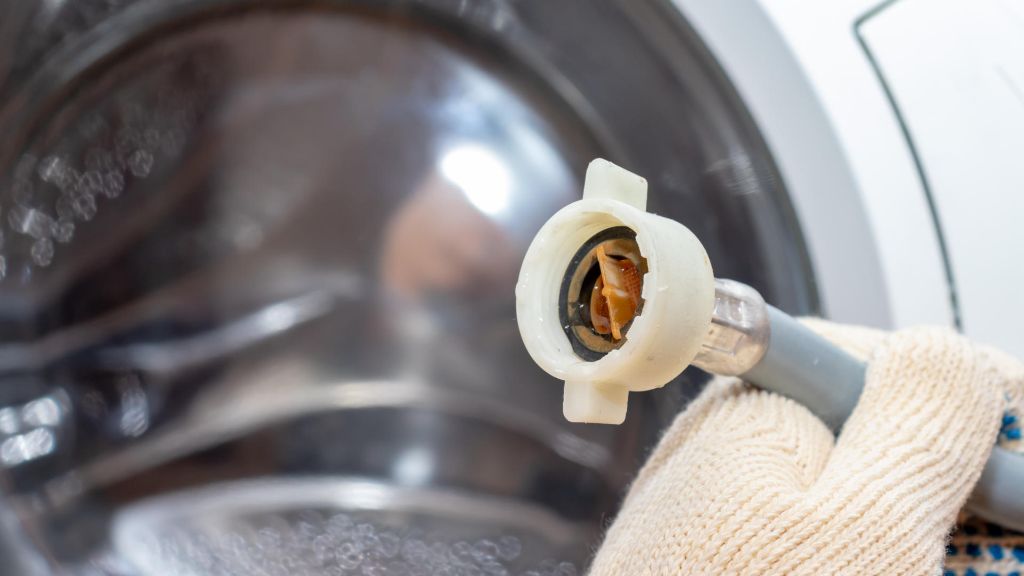Yes, the washer inlet valve can definitely get clogged over time. The inlet valve is responsible for controlling the flow of cold and hot water into the washing machine. Like any valve, the inlet valve can accumulate mineral deposits and sediment that will eventually clog its small openings.
Page Contents
What causes the washer inlet valve to clog?
There are a few common causes of a clogged inlet valve on a washing machine:
- Mineral deposits – Hard water contains dissolved minerals like calcium and magnesium. As hard water flows through the valve over time, these mineral deposits can build up and clog the valve.
- Sediment – Small particles of dirt, sand, rust, and other sediment in the water supply can get caught in the valve and accumulate over time.
- Detergent buildup – Laundry detergent and fabric softener residue can coat the inside of the valve and restrict water flow.
- Old age – Inlet valves gradually wear out over years of use. Internal parts like springs and washers eventually corrode and break down, causing clogs.
Symptoms of a clogged inlet valve
Here are some common signs that the inlet valve on your washing machine is clogged:
- Weak water flow – You’ll notice reduced water pressure and smaller amounts of water filling the drum compared to normal.
- Longer fill times – It takes much longer for the tub to fill up with water due to the restricted flow.
- Failure to fill – In severe cases, the washing machine won’t fill at all because the valve is completely blocked.
- Leaking – Water will leak from the valve housing due to the excessive pressure buildup behind the clog.
- Noise – A clogged valve often produces abnormal hissing or whistling sounds.
How to unclog a washer inlet valve
If you suspect your washing machine’s inlet valve is clogged, here are some steps to try unclogging it:
- Turn off the water supply – Shut off the hot and cold water taps connected to the inlet hoses.
- Disconnect hoses – Unscrew the inlet hoses from the back of the washing machine.
- Inspect filter screens – Check the filter screens inside the valve ports and remove any debris.
- Flush the valve – Use a garden hose to flush and backwash the valve ports.
- Descale valve – For stubborn mineral deposits, pour white vinegar or a descaling solution into the valve and let it sit before flushing.
- Reassemble – Reconnect the inlet hoses and turn the water back on to test.
In many cases, this DIY process is enough to dislodge blockages and restore proper water flow. If the inlet valve is still clogged after trying these steps, replacement of the valve may be necessary.
When to replace the inlet valve
Here are some signs that indicate when the washing machine’s inlet valve is beyond repair and needs replacing:
- The valve ports are severely corroded or damaged.
- Seals and internal parts are worn out or leaking.
- Valve strainers are missing or defective.
- Unclogging efforts haven’t improved water flow.
- The valve is more than 5-7 years old.
Replacement inlet valves are widely available for purchase at appliance parts stores or online. They typically cost $15-$60 depending on the model. Replacing the valve requires basic plumbing skills – the old valve is disconnected from the hoses and back of the machine, and the new valve is installed in its place. The procedure takes 30-60 minutes.
How to prevent inlet valve clogs
You can minimize the chances of a clogged inlet valve by taking these preventative steps:
- Install water filtration – Use whole house or inline water filters to remove sediment and minerals.
- Use a water softener – Soften hard water to reduce mineral buildup in valves.
- Change hoses – Replace old inlet hoses that may be coated internally with debris and buildup.
- Clean filters – Periodically remove and clean the filter screens inside the valve ports.
- Run valve cleaning cycles – Use washer cleaning cycles monthly to flush vinegar through the inlet.
- Avoid overloading machine – Overloading can trap more dirt and particles that clog valves.
Conclusion
Like any component, the washing machine’s inlet valve can gradually clog up with debris over time. But with proper maintenance and water filtration, inlet valve clogs can often be avoided. Learning to recognize the symptoms of a clogged valve and following the right unclogging techniques can also go a long way towards restoring optimal performance and extending the lifespan of this important washer component.
